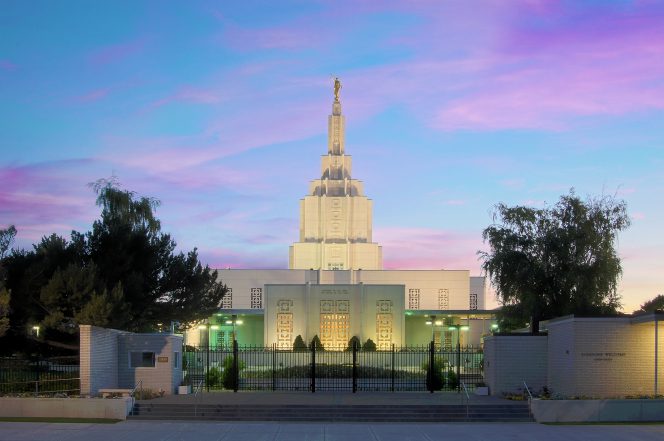
(LDS Media Library)
Critics often claim that the Church of Jesus Christ of Latter-day Saints doesn’t give enough money to charity.
What that typically means is that the Church doesn’t do enough charitable work of the kind that they would approve. Because, after all, the Church is a charity. In a sense, their complaint is rather like lamenting that the Sierra Club doesn’t dig water wells in Africa, or that the Red Cross supports no museums or opera companies, or that Médecins Sans Frontiers saves few if any seabirds from oil spills.
Or, perhaps more accurately, their accusation means that the Church is doing things of which they disapprove. These critics typically think that the money spent on temples should instead be spent on the homeless or on feeding the hungry. (I’ve recently seen a spate of such criticism in response to the renovation of the Idaho Falls Temple.) In other words, they don’t believe in the importance of temples and the work of redeeming the dead.
Fine. They don’t need to do temple work or to support the construction of temples. Devout Latter-day Saints believe in and support such efforts, but unbelievers are free to abstain.
Typically, these critics aren’t contributing to the work of the Church. So their complaints about the donations of other people are, sometimes, just a bit bemusing. Moreover, whether they themselves are actually doing much to help the homeless or to feed the hungry is typically unclear and undemonstrated. Certainly, their computers could be sold to buy rice, and the time they’re spending online could be devoted to serving in soup kitchens. (Two can play this game.)
Such critics often cite City Creek Mall in Salt Lake as their prize illustration of the Church’s lack of charity. But does their criticism actually make much sense? Is it the indisputable slam dunk that they imagine it to be?
I don’t think so. (See, for example, the argument made five years ago by Nathan Oman, in his “City Creek and the Choices of Thrift.”)
Nor do some other accusations made by critics fully withstand scrutiny. (See, for example, Kaimi Wenger’s nearly five-year-old response to “Business Week’s erroneous claim about LDS charitable giving.”)
Of course, what the critics are often demanding is simply that, in a world where people are hungry or without shelter, the Church should be helping the hungry and the homeless.
But it is helping the hungry and the homeless. And the sick. And the poor. And the unemployed. And the disabled.
Could it do more? Yes. Of course. And there’s plenty to be done.
“The harvest truly is great, but the labourers are few: pray ye therefore the Lord of the harvest, that he would send forth labourers into his harvest.” (Luke 10:2)
But, presumably, the critics could also do more. Do they go to movies? Do they eat out? Do they have chairs and sofas in their homes? Do they have cars? Have they spent any money on music? Those things could be abandoned or sold, and the money saved could be given away.
Is art frivolous? Should art museums be shut down, their contents auctioned off, and the proceeds distributed among the poor? Should there be symphony orchestras? Rock concerts? Ballet companies? Baseball stadiums? Football teams? Is water skiing a crime against the hungry? Is snowboarding an offense? Should anybody own an iPhone or an iPad?
These are actually serious questions, and the line will be drawn and the balance determined differently by different people at different times.
As things stand, though, the Church is building chapels and temples, supporting missionary work around the world, subsidizing schools and universities, and, yes, helping the poor and the needy.
Consider, for example, the work of LDS Charities. You can study its full report here, or read a much shorter summary here.
And please recall that LDS Charities represents only a fraction of the work that the Church is doing in this regard. There remain many other things, including fast offerings and service missions and Church Welfare (see also this) and the myriads of projects undertaken by home teachers and visiting teachers and local congregations around the globe. Not to mention the private initiatives undertaken by Latter-day Saints, such as the Liahona Children’s Foundation and a number of others.











